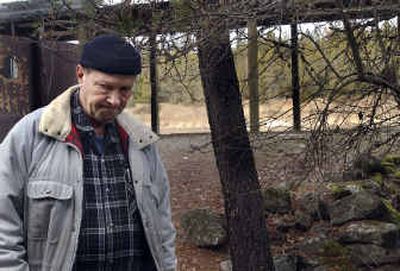Farragut target range under fire

BAYVIEW, Idaho – The distant sound of gunfire has echoed over this Pend Oreille lakeshore community since World War II, when young sailors practiced shooting skills at nearby Farragut Naval Training Center.
A planned expansion at the shooting range – now a public facility run by the state – has prompted sharp protests from neighbors. The occasional pop-pop-popping from weekend plinkers could start sounding like a battlefield under the state’s plan, said Sheryl Puckett, a Bayview resident who has helped circulate petitions against the expansion.
“It’s going to be Silverwood for shooters,” Puckett said, making reference to the nearby amusement park.
But Idaho officials say updates of the shooting range will improve safety and actually reduce the volume heard by neighbors. Monthly sound measurements will be taken on busy Saturdays at the park’s boundary to ensure the noise does not exceed 80 decibels, said Dave Leptich, regional wildlife habitat biologist with the Idaho Department of Fish and Game.
A normal conversation is about 65 decibels; the sound of a gunshot a foot from the weapon’s muzzle is typically between 150 and 160 decibels.
“We’re bending over backwards to be good neighbors,” Leptich said.
Work is expected to begin in spring on the $2 million, 10-year project, Leptich said. After the existing range is remodeled, the plan calls for adding trap and skeet fields, mounted cowboy action shooting areas and a variety of rifle ranges up to 600 yards in length. Heavy concrete walls will divide the site into seven smaller shooting areas.
The shooting tables will be moved closer to sound-absorbing earthen berms at most of the ranges, Leptich said. This will help prevent the sound of the gunshots from dispersing and echoing over town, which is about a mile from the range through heavy timber. Shooting will also take place from covered stations, which will help reduce sound dispersion.
Opponents say they will fight to stop any expansion of the range. A public meeting on the expansion is scheduled for 7 p.m. tonight at the Bayview Community Center.
“There is no way to make this large of a shooting range anything less of a nuisance,” said Bayview resident Mike Lee.
The noise level is not the main cause of concern, Lee said. It’s the expected increase in the frequency of the shooting that concerns many. State officials have said the expanded park could host large regional shooting competitions, as well as firearms training for military reservists and law officers.
A decibel meter posted at the nearest homes – at least 600 feet away – might show the gunfire to be roughly equal to the sound level of a loud truck, but sound meters do not pick up the anxiety spikes caused by an unexpected bang, Lee said.
“First it startles you, then it annoys you,” he said.
Another opponent, Chuck Murray, lives at the base of a mountain nearly two miles from the shooting range. “When they shoot, the sound hits that damn mountain; it bounces back and it sounds like it’s coming from my back yard,” said Murray, a Vietnam veteran. “It’s terrible where I live. It sounds like when I was in the Seabees in Chu Lai.”
Leptich, with the Idaho Fish and Game Department, said Farragut offers an ideal location between Sandpoint and Coeur d’Alene for a regional shooting facility. There has been an increase in the popularity of shooting sports in recent years, he added, but North Idaho’s building boom is making it tougher to find safe shooting areas on public land. The need for a safe, public shooting range is high.
“Regionally, there’s a tremendous demand and that demand will increase,” Leptich said.
Leptich said he sympathizes with those who are concerned about the larger range, but that the improvements will prevent the facility from becoming any more of a noise burden on the neighborhood.
“I’ve lived a mile away from a shooting range before. Nobody really wants a shooting range in their back yard. But this is a legitimate use of that property,” Leptich said.
The decision to expand the range was made after a series of public meetings, Leptich said. The meetings began in 1996, but the site master plan was not finalized until July. Leptich said he is frustrated to hear “11th-hour concerns” from opponents.
“We’re still listening to the community. We’re still willing to make reasonable and cost-effective adjustments. But we’re not going to go back and make major adjustments or major revisions,” he said.